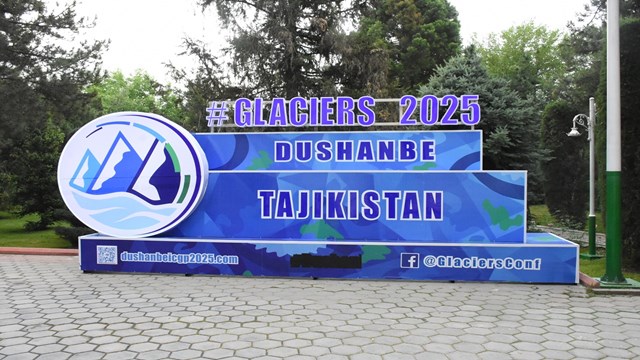
Measures Against Glacier Melting Discussed at Conference in Tajikistan
Measures Against Glacier Melting Discussed at Conference in Tajikistan
At the High-Level International Conference on Glacier Preservation hosted by Tajikistan, a panel was held to discuss potential measures to mitigate the risks associated with glacier melting.
Organized through the initiative of the Government of Tajikistan, the High-Level International Conference on Glacier Preservation is taking place in the capital, Dushanbe, from May 29–31.
As part of the conference, a panel titled "Glacier-Related Hazards and Disaster Risk Reduction: Harnessing the Power of Early Warning Systems for All" was moderated by Natalia Patricia Alonso Cano, Regional Director for Europe and Central Asia at the United Nations Office for Disaster Risk Reduction (UNDRR).
Tajikistan’s Deputy Prime Minister and Chair of the National Platform for Disaster Risk Reduction, Sulaimon Ziyozoda, emphasized in his speech that climate change is accelerating glacier melt, which in turn increases the risk of natural disasters.
Ziyozoda noted that approximately 1,300 glaciers in the country have melted over the past century, leading to flash floods, river overflows, and damage to infrastructure — threats that particularly endanger the agricultural sector.
Given that around 60% of the population in Tajikistan depends on agriculture, he highlighted that glacier-related risks have become a national priority.
He underscored that early warning systems play a vital role in disaster risk reduction, emphasizing that technological solutions alone are not sufficient. He also called for public awareness, international cooperation, and comprehensive strategic approaches to effectively tackle the issue.
“Early warning systems must work for everyone, everywhere”
Celeste Saulo, Secretary-General of the World Meteorological Organization (WMO), also spoke at the panel, stressing that threats arising from glaciers are becoming an increasing risk in the context of the climate crisis.
She noted that the melting of a single glacier can trigger a chain of disasters, including glacial lake outburst floods, landslides, avalanches, and mudflows. This, she said, necessitates a systematic and holistic approach to managing multi-hazard risks.
Saulo shared that as of March 2024, only 108 out of 193 countries have functional early warning systems against disasters, and that many least developed countries and small island states still face major gaps in this area.
Explaining the objective of the “Early Warnings for All” initiative, Saulo said it aims to strengthen countries' capacities to respond swiftly and effectively to disasters.
“Early warning systems are highly effective against disasters,” she said, “but these systems need to be accessible to everyone, everywhere.”